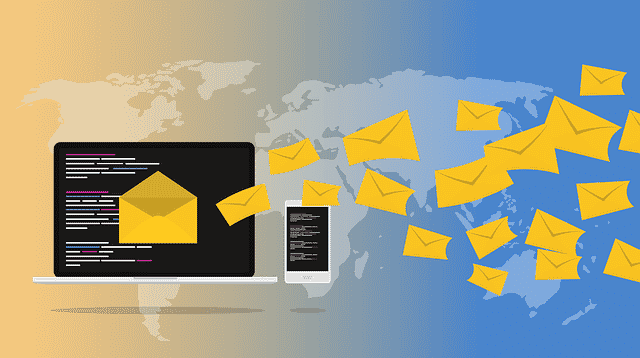If you itself If you are dealing with email server security and authentication, sooner or later you will be faced with the question of DKIM. In this Article We will explain to you what exactly a DKIM dump is, how it works and what advantages it offers you.
What is DKIM?
DKIM stands for DomainKeys Identified Mail and is a security feature used when sending emails. The method ensures that the origin of a message can be proven using a digital signature. This can ensure that the email has not been manipulated or replaced unnoticed.
How does DKIM work?
If you are wondering what DKIM is and how it works, you have come to the right place. In this article you will learn everything about DKIM: what it is, what it is used for and how it works.
DKIM stands for Domain Keys Identified Mail and is a method for authenticating emails. A digital key is stored in the email header, which can be used to verify the sender address. This way you can ensure that the email actually comes from the specified person Domain and has not been manipulated or forged.
DKIM is transparent for the recipient of an email - they do not even notice that the email is being checked. The key is checked automatically in the background by the recipient's mail server.
If the key is valid, the email is accepted as authentic. However, if the key is not valid or has expired, the recipient can use it Server & Hosting inform about this and the email can be blocked by the server or sent to the spam folder.
Why is DKIM important?
DKIM is important because it provides a way to verify the authenticity of emails. This means that you can be sure that the email you receive actually comes from the sender specified. DKIM also prevents other people from reading or modifying your emails.
What are the advantages of DKIM?
DKIM is a security protocol that prevents spammers and phishers from tampering with your emails. DKIM signs every email with a digital key, ensuring that the email actually comes from you and has not been altered by a third party. DKIM also allows you to verify the authenticity of Links in emails.
So DKIM offers you some important advantages that your Safety increase and also help to avoid phishing emails. Furthermore, it also allows you to ensure that the email address actually belongs to you and is not being misused by a third party. DKIM also ensures that the email is only sent to the recipient Server & Hosting is sent and not forwarded to another server or computer.
What are the disadvantages of DKIM?
Although DKIM offers some advantages, it also has some disadvantages. Among other things, collisions with other technologies can occur if DKIM is not configured correctly. Unwanted emails can also be validated by DKIM if the spammers forge the recipient's DKIM signature.
Furthermore, DKIM can affect server performance as it requires additional computing time and Resources required to sign and validate all emails. It also requires a certain amount of technical knowledge to successfully implement DKIM.
Finally, DKIM is not universal. It only works with Mail transfer Agents that support DKIM and it cannot be used to authenticate all emails.
How do you use DKIM on your own web server?
If you run your own web server, you can easily set up DKIM on it. To do this, simply follow the steps below:
Installation
First, install the Opendkim package on your Server & Hosting. This is available in most Linux distributions either in the official repositories or in the distribution's repositories.
Edit
Once Opendkim is installed, edit the /etc/opendkim.conf file and add the following lines:
; This is a configuration file for OpenDKIM Milter.
; See opendkim.conf(5) for more information about this file and the available options..
; DKIM signing policy (change according to your needs). For details see: http://www.dkim-reputation.org/
Domain example1.com
KeyFile /etc/dkimkeys/example1_com.private
Selector default
; Common settings (change according to your needs).
Canonicalization relaxed/simple
fashion sv
Syslog yes
; Signing options
SignHeaders From,Subject,Date
X header yes
; Authentication results header field (change according to your needs).
ARHMaxCount 1
ARHRefreshInterval 12h
ARHBoundaryLength 14
ARPolicy all
; Statistics (change according to your needs).
Statistics /var/run/opendkim/stats.dat
; Logging (change according to your needs).
LogWhy yes
LogSignatures yes
Sign
You then create a private key and a public DNS record for each Domainthat you want to sign. This can be done using the open-keygen command. For example: open-keygen -d example1.com -s default. The private key is stored in the /etc/dkimkeys folder and the public key should be added to your DNS zone.
You can then view the emails sent by your Server & Hosting to be sent, sign with the private key. To do this, you need to run the dkim-signature command. The command has the following syntax: dkim-signature -d example1.com -s default -i .
The above command appends a DKIM signature to every email sent from your Server & Hosting is sent. To ensure that all emails are signed correctly, you can run the dkimverify command and check whether the public DNS record is valid. For example: dkimverify -d example1.com -s default.
The Milter
After the keys are created, you need to configure the milter (mail filter) that appends the DKIM signatures to all outgoing emails. For Postfix, change the file to do this /etc/postfix/main.cf and add the following lines:
smtpd_milters = inet:localhost:8891
non_smtpd_milters = inet:localhost:8891
After that, you have to configure the milter yourself. To do this, add the following lines to the file /etc/opendkim.conf added:
AutoRestart Yes
AutoRestartRate 10/1h
Syslog yes
SyslogSuccess Yes
fashion sv
Canonicalization relaxed/simple
ExternalIgnoreList refile:/etc/opendkim/TrustedHosts
InternalHosts refile:/etc/opendkim/TrustedHosts
KeyTable refile:/etc/opendkim/KeyTable
SigningTable refile:/etc/opendkim/SigningTable
Socket inet:8891@localhost
PidFile /var/run/opendkim.pid
Then restart the milter: service open-dkim restart and then postfix reload.
Start and check
Finally, simply start the Open-dkim service with the service opendkim start command and then use the service opendkim status command to check whether it is actually running.
How do you prevent spoofing and spam with DKIM?
To prevent spoofing and spam, you must set up DKIM correctly. First you need one DNS record create for your domain name. This entry should contain your public key DKIM signature contain. Once the DNS record is created, you can use DKIM in your Configure email client. When DKIM is configured correctly, every outgoing email is stamped with a digital signature, allowing the recipient to ensure that the message has not been altered and actually came from you.
You can also use DKIM Spam filtering use. Some email clients, like Microsoft Outlook and gmail, use DKIM technology to check the authenticity of a message and thus detect spam messages early.
Compatibility with other systems
DKIM used Public key encryptionto ensure the integrity of a message. This procedure is also used in other systems, for example S/MIME. This makes DKIM compatible with these systems and can be used to increase the security of emails.
DKIM is also compatible with other email standards such as POP3 and IMAP. Compatibility with these systems allows DKIM to be used for a wide range of applications.
Examples of DKIM dumps
A DKIM dump is a copy of the header lines of an email signed using a digital signature creation program (DKIM). These header lines contain information about the sender, the recipient and the route the email took. To create a DKIM dump, you must first ensure that DKIM is installed on your Server & Hosting is activated. If you are in doubt, contact your hosting provider or system administrator.
Once DKIM is enabled, you can create a DKIM dump by running the following command:
“dig +short TXT ._domainkey.”
Note that this command requires both “selector” and “domain” to be customized. “Selector” is the name of the selector that is in your DNS zone configured while “domain” is the domain for which you want to create the DKIM dump.
For example:
dig +short TXT ._domainkey.DOMAIN.XX
The above command prints the DKIM dump for the example domain.
The DKIM dump can then be copied or saved to a text file for later viewing or analysis.
Alternatives to DKIM
If you are after a Alternatives If you are looking for DKIM, you have come to the right place! In this article, you'll learn all about the different options available to you.
There are many reasons why you might look for an alternative to DKIM. Maybe you want to encrypt your emails or bypass the spam filter. Or maybe search Looking for a simpler solution that requires less effort.
Fortunately, there are a number of alternatives to DKIM that can meet all your needs. In this article we will introduce you to the three best options.
S / MIME
S/MIME is a Minutes for the Email encryption and signature, which has been used for a long time. It's relative easy to implement and allows you to encrypt and sign emails.
S/MIME is a very secure way to encrypt and sign emails. However, it is not as efficient as DKIM as it requires much more effort. However, for smaller companies or individuals, S/MIME is a good option.
DomainKeys
DomainKeys is a similar protocol to DKIM, which from Yahoo developed became. It has many of the same features but may be easier to implement. Since Domain Keys is relatively new, not all email providers are yet configured for this protocol.
SPF/DKIM/DMARC combination
SPF (Sender Policy Framework), DKIM (Domain Keys Identified Mail) and DMARC (Domain-based Message Authentication, Reporting & Compliance) are all different options that you can combine to make your Authenticate emails and spam to avoid. SPF is a DNS record that authenticates the sender of an email, while DKIM handles the signing and DMARC handles the reporting. This combination is very effective in authenticating emails.
Summary
Domain Keys Identified Mail (DKIM) is a mechanism that allows a recipient to ensure that the message they receive actually comes from the specified sender. This is achieved by using a digital signature created using the sender's private key.
The DKIM dump is a Tools, which you can use to find out whether your emails comply with DKIM standards. You just enter your domain name and it will tell you whether you passed the test or not.
Conclusion
Finally, we would like to briefly summarize what DKIM is and why it is so important. DKIM is an authentication method used to ensure that an email actually came from the specified sender. This is especially important as more and more companies receive phishing emails attempting to steal sensitive information. DKIM provides an additional layer of security for email senders and recipients and should therefore be enabled on all email services.





